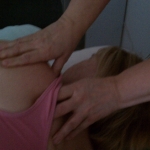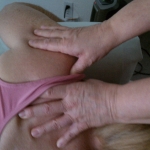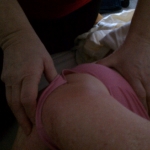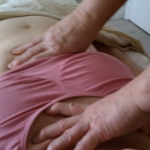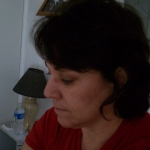Rolfing® is the Brand name for Structural Integration. It was developed by Dr. Ida P. Rolf over 50 years ago. Rolfing has many of the same benefits as therapeutic massage in terms of increasing circulation, decreasing stress and increasing productivity. Here is where massage and Rolfing part company. Rolfing works on the premise of the force of gravity; on strain lines in the connective tissue called fascia; and to release deeper patterns that causes tension. Those strain patterns cause compensations and adaptations. The connective tissue (fascia) gives us our shape and form. It tells us our position in space and supports all structures including nerves, muscles and bones. Rolfing is hands-on manipulation, movement education and Structural Integration. It works on changing the connective tissue (fascia) to release tension, realign, and balance the whole body. Each session has goals and territories toward enhancing posture and freedom of movement and less pain. Rolfing realigns posture, structurally and neurologically integrates and re-balances the whole body releasing adaptations and deep tension. It’s the ultimate in stress relief, increased flexibility and ease of movement.
Whereas when having a massage, the client does not have to be presently aware. Rolfing is an interactive, educative process and the client is encouraged to stay present, participate and have conscious awareness of sensations and share observations with the Rolfer. Being present is one of the integrative tools that empower the client toward keeping the changes.

